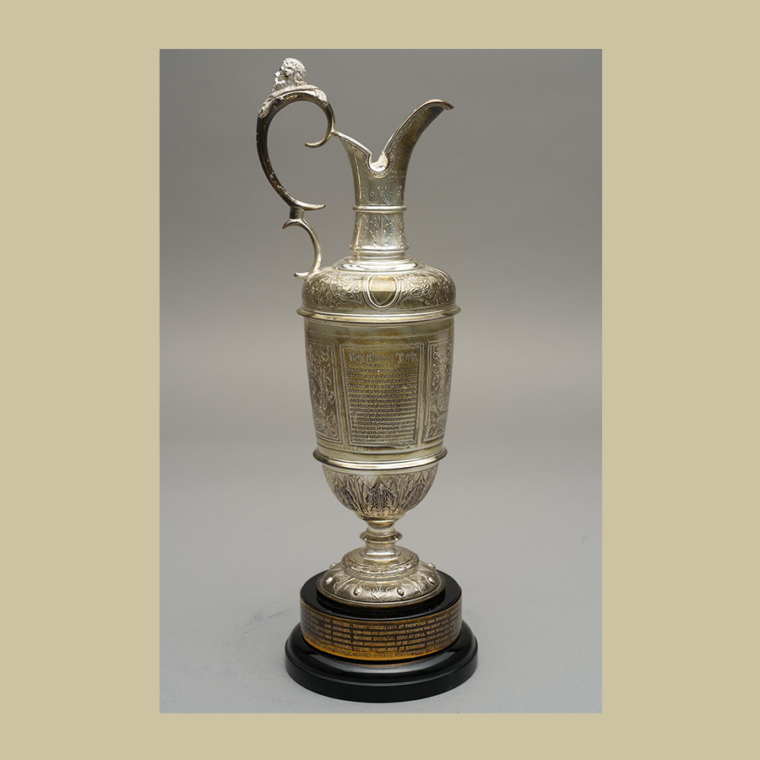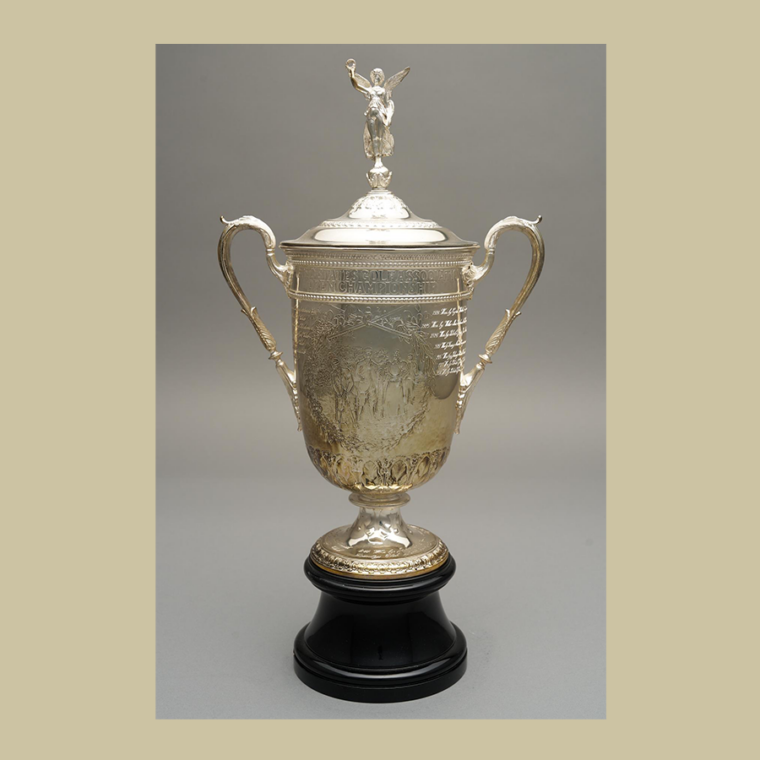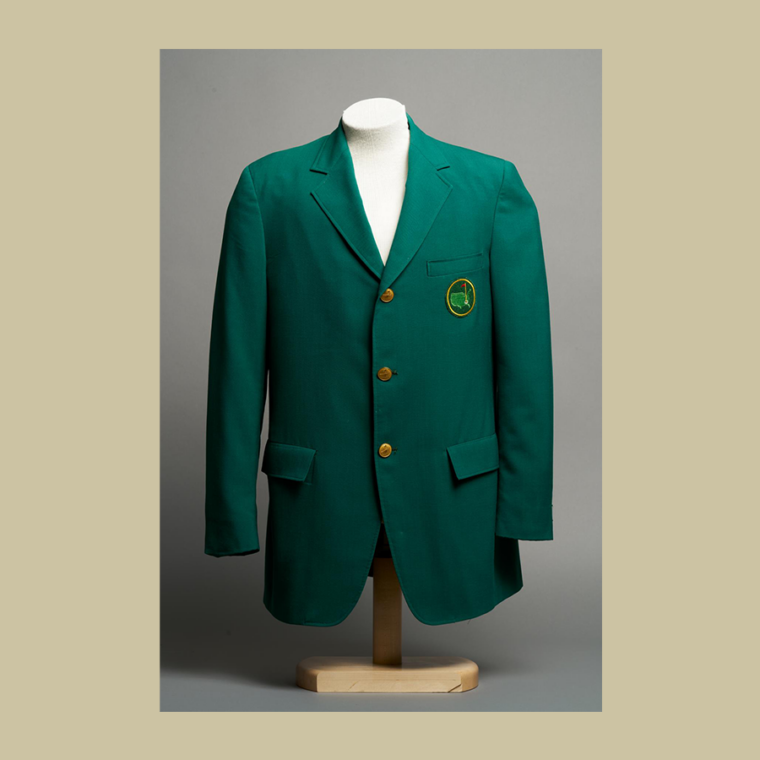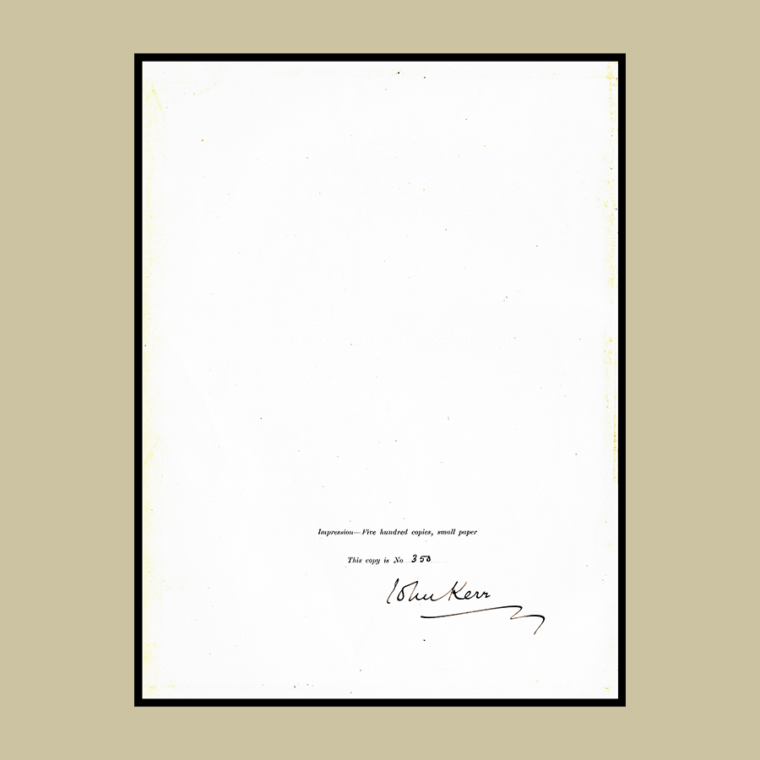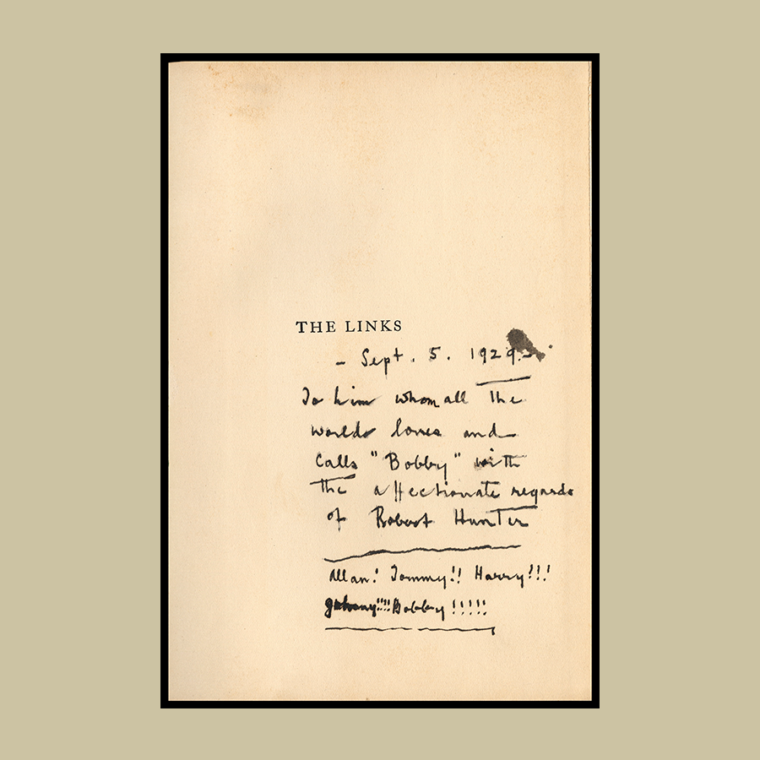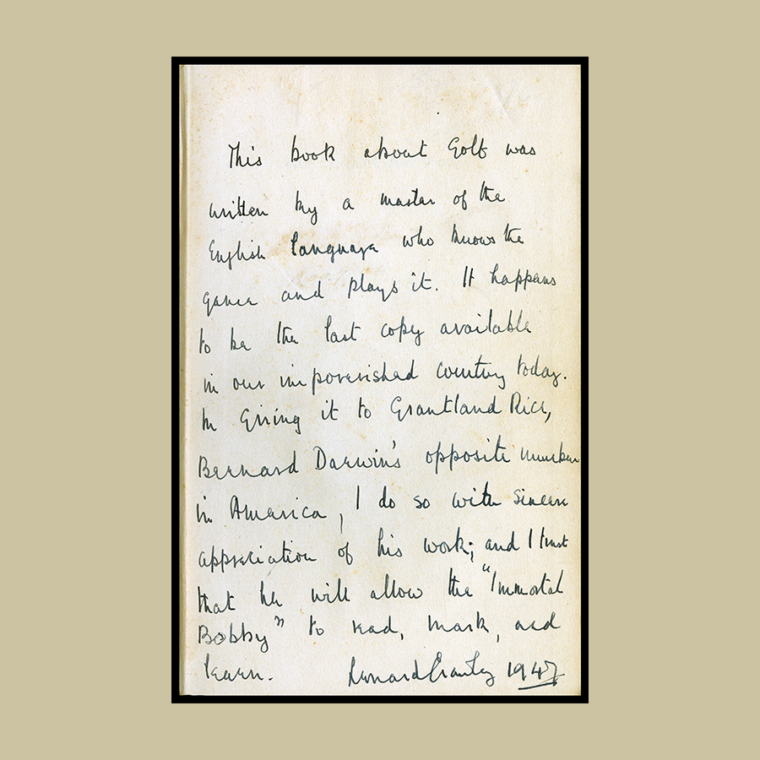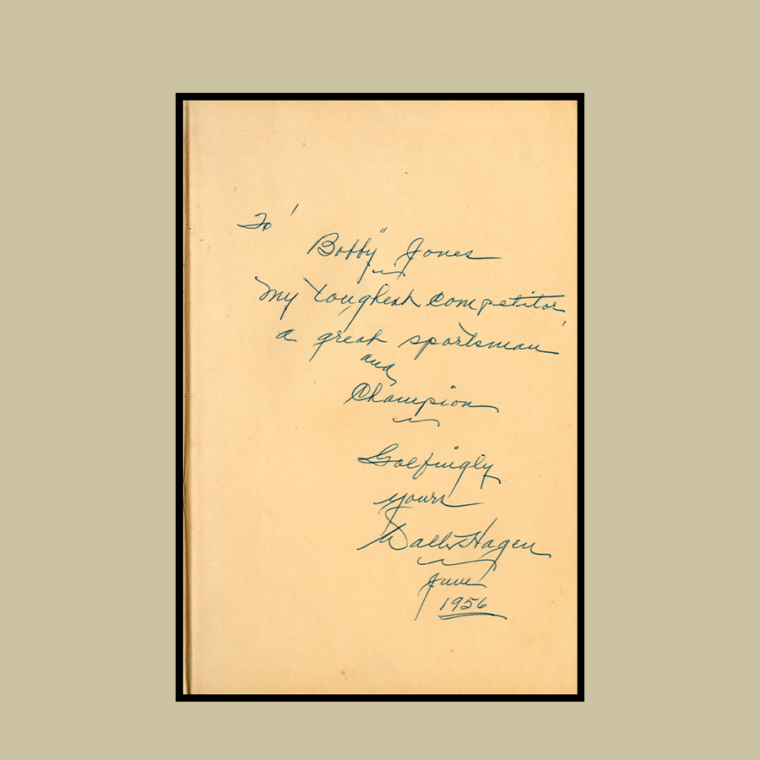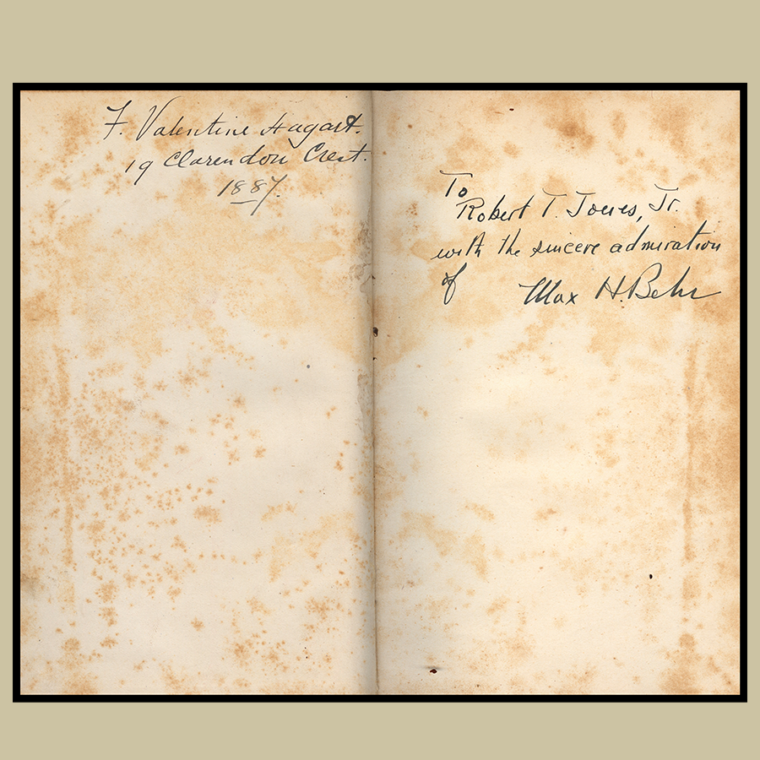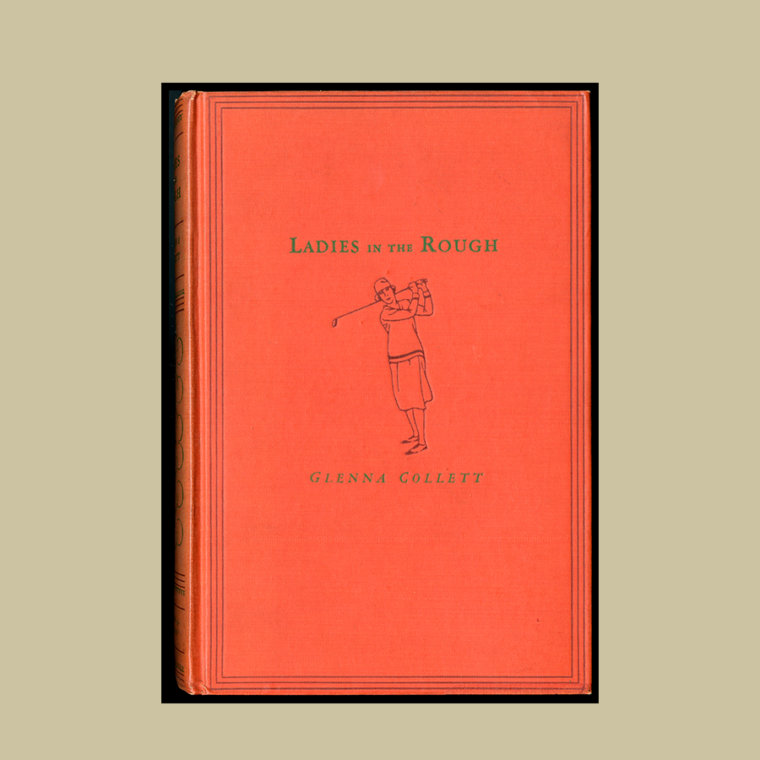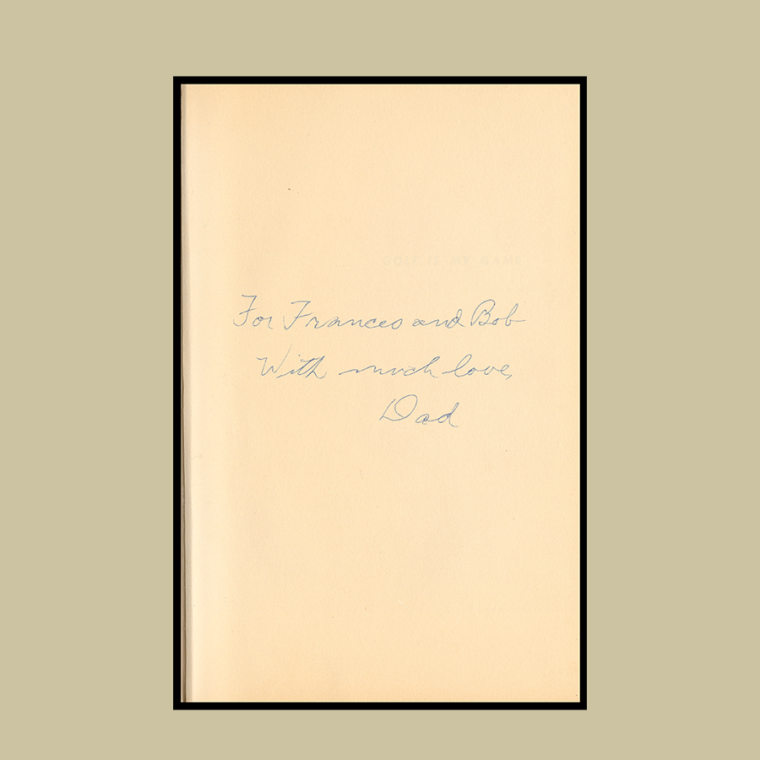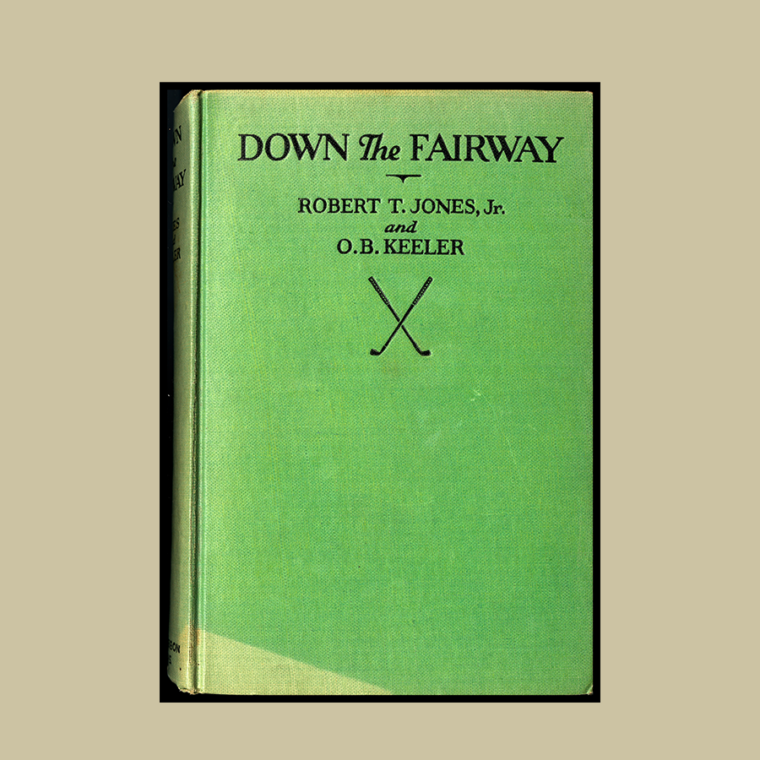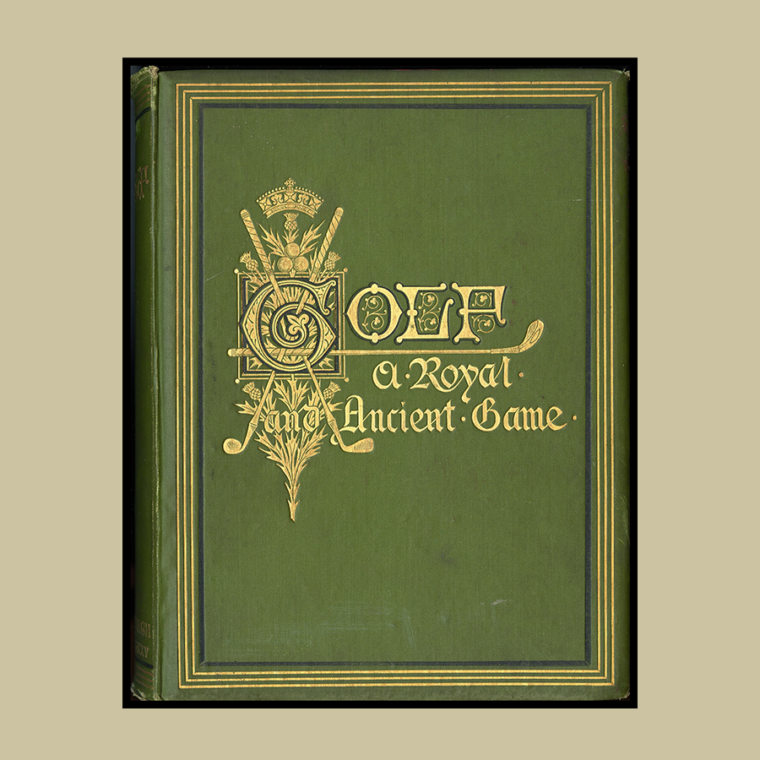On view at Atlanta History Center.
While dozens of male and female athletes excelled in the “Golden Age of American Sport,” none captured the public imagination quite like Atlanta’s own Robert Tyre “Bobby” Jones.
Bobby Jones is credited with popularizing golf on an international stage. His sportsmanship called attention to the game’s best traditions, and his success and character on and off the course have inspired generations. His 14-year career as a sportsman culminated in 1930 when he became the only amateur golfer to ever win a Grand Slam – all four of golf’s major tournaments in the same year.
Discover the man who transcended sports during the Great Depression and became an American hero at a time when the nation most needed one.
Thanks to the generous contributions of the Imlay Family as well as those of many individual donors, Atlanta History Center is proud to be the home of Fair Play: The Bobby Jones Story an exhibit on the life and career of one of Atlanta’s most iconic residents and sportsmen.
Jones’ career as a golfer was tied to his life as an Atlantan. When he was a child in the early 1900s, Jones’ family moved to East Lake Golf Course, one of just a few courses in the area at the time, as golf began to gain popularity with upper-middle-class Americans. There, young Bobby spent hours following course pro Stewart Maiden, copying his swing with a makeshift club. Bobby Jones won his first golf championship at age nine, and his first tournament at age fourteen. During World War I, he played charity matches for the war effort with a group of young and promising Southern golfers known as the Dixie Whiz Kids. As he began his adult career, Jones suffered what sports journalist O.B. Keeler would later term the “seven lean years.” During those years, Jones never won a major championship, but they still helped shape his career, particularly when it came to his storied sportsmanship; after a public display of anger and frustration during a bad round, Jones began to master his temper and develop the ethos of calm sportsmanship for which he came to be known.
Then, in 1923, came the “seven fat years.”
Bobby Jones won his first major tournament at Inwood golf course in New York, kicking off years of victories that would culminate in his Grand Slam in 1930, when he won the British Open, the British Amateur, the U.S. Open, and the U.S. Amateur tournaments. After every win, Jones returned home to Atlanta, which welcomed him with ecstatic and open arms, and, after his Grand Slam win, a parade. Jones matched Atlanta’s dedication to him. Having received an undergraduate degree from Georgia Tech and a law degree from Emory University, he retired from golf after his 1930 Grand Slam and joined his father’s law practice.
Throughout his life as a busy corporate lawyer and community member in Atlanta, Jones still made time for the sport he loved. He recorded a video tutorial series with Warner Brothers, used his Georgia Tech engineering degree to design a series of renowned golf clubs with Spalding, and, perhaps most famously, helped design Augusta Golf Course and start its beloved Masters tournament, which was first played in 1934. During the Second World War, Jones left law to serve in military intelligence in Europe, returning home to Atlanta after about two months because of his father’s poor health.
Jones’ time as a recreational golfer began to rapidly decline in 1956, when he was diagnosed with syringomyelia, a neurological disorder that primarily affected his spine and drastically reduced his mobility.
In 1958, Jones received an honor that reflected not only his golfing ability, but also his inspirational personhood. The city of St. Andrews, Scotland, birthplace of golf, offered Jones, who had played many games on its storied Old Course, the Freedom of the City of the Royal Burgh of St. Andrews. The Freedom of the City, as it is known, was an honor that had previously been reserved for statesmen, scientists, and men of letters. The only other American to have received it at the time was Benjamin Franklin. In 1967, Bobby Jones attended his last Masters’ tournament. By that point, he had retired almost completely from public life. He died in 1971 of complications from syringomyelia.
Atlanta History Center is proud to be part of the numerous exhibits and projects around the city dedicated to Bobby Jones and his legacy as one of the greatest golfers and sportsmen in history. Our collections include replica trophies and clubs, tournament memorabilia, and memorabilia of Jones himself, including many items donated by John Imlay. They also include Bobby Jones’s golf library, filled with influential books on the sport, often inscribed to Jones by their authors. Check out our online resources, our exhibit on Jones and his legacy: Fair Play: The Bobby Jones Story, in the Imlay Gallery, or Kenan Research Center for more information.
Further Resources – If you’re looking for more information on Bobby Jones, his legacy, or memorabilia related to his life and career, check out these other great resources:
• To learn more about AHC’s collections related to Bobby Jones, check out our finding aid , or search our archive.
• For a description of Bobby Jones’ Augusta National Golf Course, click here.
• For more on Jones’ golfing legacy in Atlanta: Bobby Jones Golf Course.
• To learn about the club where Jones began to play, as well as the efforts to restore it in the 1980s and 1990s: East Lake Golf Club
• For further collections relating to Bobby Jones’ life and legacy: Emory University Bobby Jones Collection Finding Aid, Bobby Jones Collection and Research Files, Emory University
• Learn about the Bobby Jones Scholarship exchange between Emory University and the University of St. Andrews.
• Learn about the United States Golf Association’s Bob Jones Award.
• For more on the Atlanta Athletic Club, which called East Lake Golf Course home when Bobby Jones lived there as a child, click here.
• For more on Merion Golf Club, where Bobby Jones won his first National Amateur tournament in 1924, click here.

